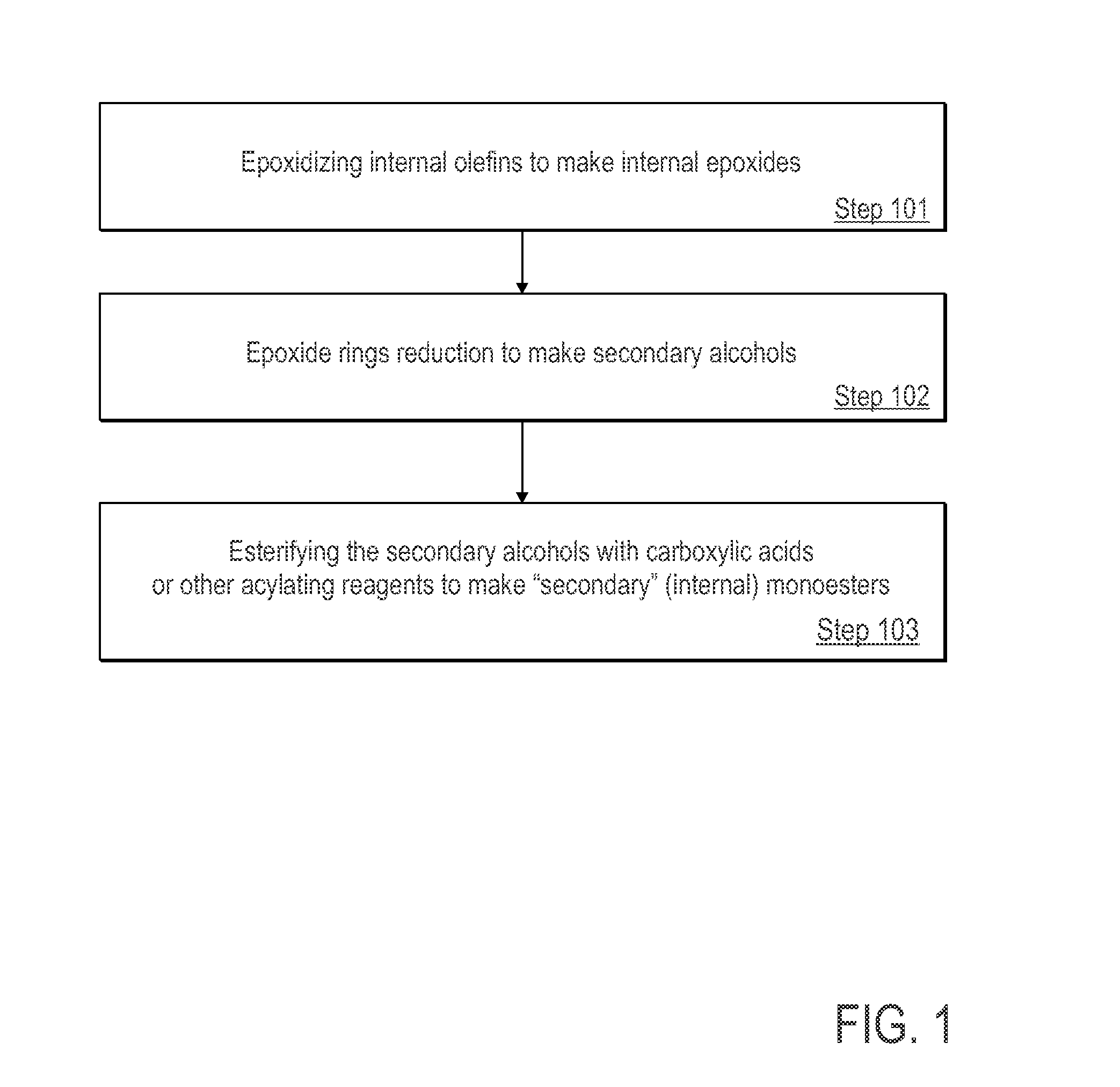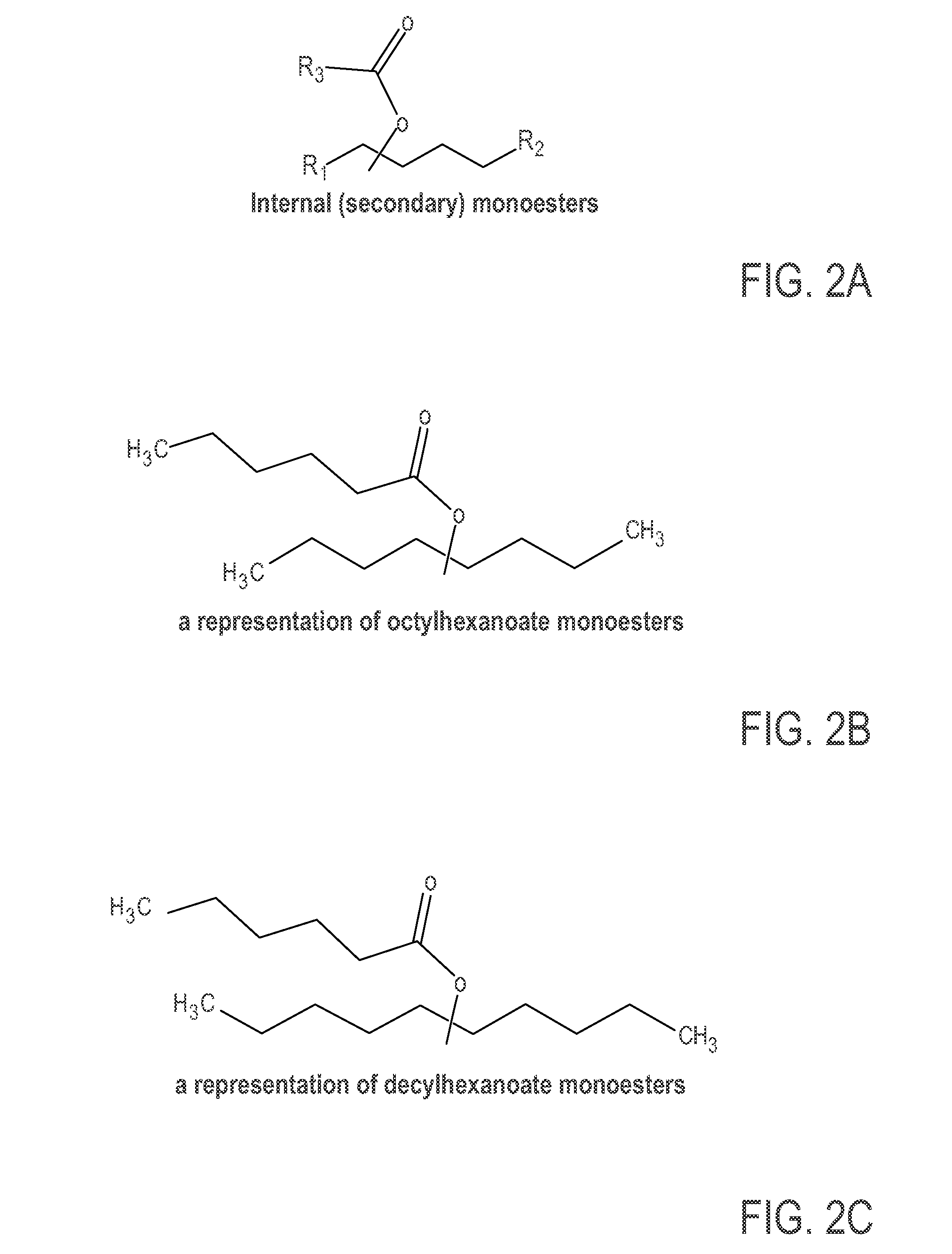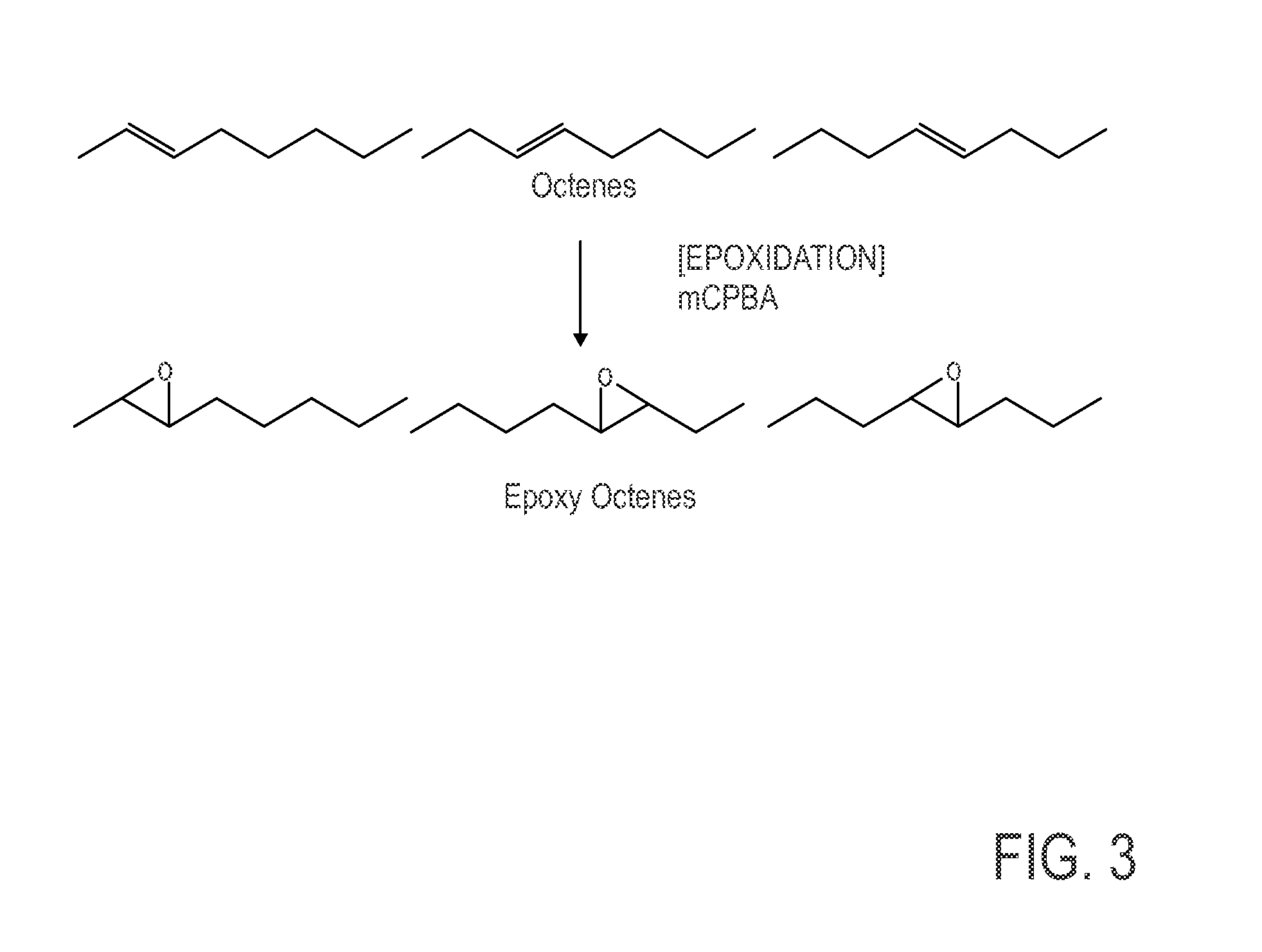Monoester-based lubricants and methods of making same
a lubricant and monoester technology, applied in the field of monoester-based lubricants, can solve the problems of more involved preparation of esters and more expensive effects
- Summary
- Abstract
- Description
- Claims
- Application Information
AI Technical Summary
Benefits of technology
Problems solved by technology
Method used
Image
Examples
example 1
[0055]This Example serves to illustrate synthesis of a secondary alcohol en route to synthesis of a monoester species, in accordance with some embodiments of the present invention.
[0056]Epoxidation of Octenes into Epoxy Octanes
[0057]A mixture of 2-octene, 3-octene and 4-octene (1:1:1 mixture), purchased from Aldrich Chemical company, were epoxidized as follows using the general procedure described below (Scheme 1). To a stirred solution of 509 grams (2.95 mol) of 77% mCPBA (meta-chloroperoxybenzoic acid) in 2000 mL n-hexane in an ice bath, 265 grams (2.36 mol) of 2-octene, 3-octene and 4-octene (1:1:1) mixture were added drop-wise via an addition funnel over a period of 60 minutes. The resulting reaction mixture was stirred over 0° C. for 2 hrs. Then, the ice bath was removed and the reaction was allowed to stir overnight. The resulting milky solution was subsequently filtered to remove meta-chloro-benzoic acid that formed therein. The filtrate was then washed with a 10% aqueous sol...
example 2
Reduction of 2,3-Epoxy Octanes to Secondary Octanols
synthesis examples
[0059]The epoxy octanes with little residual hexane produced according to example 1 were reduced with lithium aluminum hydride in THF (Tetrahydrofuran) according to the procedure described below. The products from example 1 were divided into two equal portions and each portion was reduced separately with lithium aluminum hydride in anhydrous THF. Assuming full conversion of the octenes to epoxides in Example 1, each portion was assumed to contain 1.18 moles (151.3 grams) of epoxy octanes. Accordingly, a suspension of 56 grams (1.48 mol.) of lithium aluminum hydride in 1000 mL anhydrous THF in 3-liter 3-neck reaction flask equipped with an overhead stirrer and reflux condenser, was cooled down to 0° C. in an ice-bath. To this suspension and while stirring, one of the two portions of the epoxy octanes mixture (presuming 151.3 grams; 1.18 mol.) was added drop-wise via a sealed dropping funnel. Once the addition was complete, an additional 100 ml of THF was added via the dropping funnel...
PUM
| Property | Measurement | Unit |
|---|---|---|
| Temperature | aaaaa | aaaaa |
| Temperature | aaaaa | aaaaa |
| Kinematic viscosity | aaaaa | aaaaa |
Abstract
Description
Claims
Application Information
 Login to View More
Login to View More - R&D
- Intellectual Property
- Life Sciences
- Materials
- Tech Scout
- Unparalleled Data Quality
- Higher Quality Content
- 60% Fewer Hallucinations
Browse by: Latest US Patents, China's latest patents, Technical Efficacy Thesaurus, Application Domain, Technology Topic, Popular Technical Reports.
© 2025 PatSnap. All rights reserved.Legal|Privacy policy|Modern Slavery Act Transparency Statement|Sitemap|About US| Contact US: help@patsnap.com



